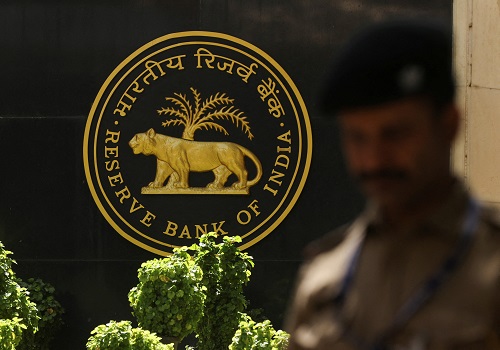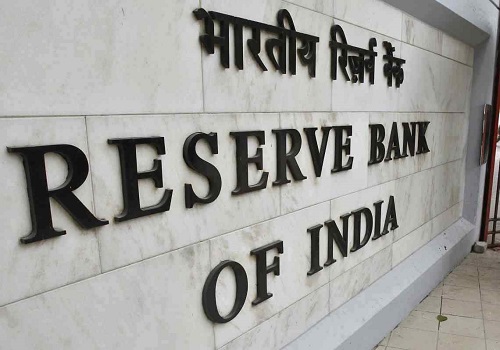Global Economy Update June 2025 by CareEdge Ratings

Strait of Hormuz: A Critical Choke Point

* Despite the current ceasefire, the conflict in the Middle-east region remains a key monitorable. Oil flow through the Strait of Hormuz accounts for about 25% of global seaborne oil trade and 20% of global oil and petroleum product consumption.
* Saudi Arabia and the UAE are key oil transporters through the Strait. However, they also have developed alternative infrastructure to bypass it and mitigate short-term disruptions, if tensions escalate.
* 84% of the crude oil and condensate and 83% of the liquefied natural gas that moved through the Strait of Hormuz went to Asian markets in 2024 with China, India, Japan and South Korea being top destinations.
* Assuming no further escalation, we estimate Brent to average around USD 65-70 per barrel in 2025-26.
Rise in Geo-Political Tensions Spur Defense Spending Across Globe

* Following the Russia-Ukraine and Israel-Iran conflicts, geopolitical tensions have escalated compared to the relatively stable period between 2003 and 2021.
* As a result sharp rise in military expenditure has been witnessed, with total world military expenditure reaching USD 2.7 trillion, accounting for 2.5% of global GDP in 2024.
* Military expenditure grew by 9% (y/y) in 2024 and 6% (y/y) in 2023 compared to an average of 2% (y/y) seen between 2014-22.
* Military expenditure increased in all five of the world’s geographical regions for the second year in a row in 2024, reflecting heightened geopolitical tensions across the globe. Largest increase in military spending was seen in Europe with 17% rise in 2024.
* The North Atlantic Treaty Organization (NATO) members have agreed to increase the defense expenditure to 5% of GDP by 2035 from current 2%.
* The five biggest spenders in 2024 were the United States, China, Russia, Germany and India, which together accounted for 60% of world military spending
Who Moved My Yields- Fiscal Deficit?

* Debt is expected to be higher than current levels in most of the major economies between 2025-29.
* US, UK, France and China’s future upward debt to GDP trajectory path remains concerning.
* The rise in debt to GDP ratio is driven by elevated fiscal deficits amidst higher military and ageing related spending pressures and rising debt servicing costs.
* India continues to be an outlier, with lower future expected debt to GDP levels driven by fiscal consolidation.
* Government bond yields have risen steadily across most advanced economies reflecting higher fiscal concerns.
Asian Currencies Strengthen Amidst Weaker Dollar Environment

* The US Dollar Index (DXY) has weakened 9.6% CYTD, reflecting fading investor confidence amidst rising US fiscal and trade policy risks.
* Investors are increasingly hedging their currency exposure on US assets as the dollar loses momentum.
* Asian exporters, traditionally large holders of US securities, appear to be reducing dollar exposure, which is resulting in an appreciation of their domestic currencies.
* There is also speculation that countries like Taiwan and South Korea may be allowing currency appreciation as part of the trade negotiations with the US.
* The yuan has appreciated modestly, in contrast to its sharp depreciation during the first trade war.
China: Trade Tensions De-escalate; Property Weakness Persists

* The US and China agreed to a 90-day tariff truce, with deeper-than-expected tariff cuts.
* China’s exports rose 6% YoY in Jan-May 2025, though exports to the US fell 9%. The truce may support near-term exports through front-loading of orders.
* Real estate investment fell 10.6% YoY in Jan-Apr 2025, highlighting continued weakness in the sector.
* In May, the PBoC cut key lending rates to record lows and reduced the reserve requirement ratio by 50 bps. Further policy easing is expected.
India: Talks Concluded on Historic Free Trade Agreement with UK

* 99% of Indian exports to the UK will enjoy zero duty, benefiting sectors like RMG, toys, gems and jewellery, engineering goods, auto parts and engines, and chemicals.
* India to reduce duties on whisky (from 150% to 40% over 10 years) and cars (from 100% to 10% under quota).
* Deal to boost services trade and talent mobility, supporting IT, financial, professional and educational services.
* As per the Government of India, India-UK bilateral trade of USD 60 billion is projected to double by 2030 with the help of FTA.
* Similarly, India’s ongoing trade negotiations with other countries/regions like the US, EU, and New Zealand are a positive for its external sector outlook
India: Growth Surprises on the Upside; RBI Front-Loads Easing

* India’s Q4FY25 GDP growth came in at 7.4%, exceeding expectations and lifting FY25 growth to 6.5%, though down from the 8.4% average over the past two years.
* The RBI delivered a larger-than-expected 50 bps repo rate cut to support growth amidst easing inflation and shifted its stance to neutral from accommodative.
* A phased 100 bps CRR cut from Sep is expected to inject ~Rs 2.5 trillion of durable liquidity by Dec-25, supporting credit growth and monetary policy transmission.
* The RBI retained its FY26 GDP growth forecast at 6.5% but lowered its CPI inflation projection to 3.7% from 4%.
* We do not expect further RBI rate cuts unless downside risks to growth materialise.
Bangladesh: Import Costs Pressures Keep Inflation Higher than Central Bank Target

* Inflation has cooled since October-2024 due to decline in food prices, though higher than 7-8% central bank target range.
* Exchange rate has depreciated significantly attributed to widening current account deficits and falling reserves leading to import costs pressures.
* Bangladesh’s central bank has maintained tight monetary policy since 2022 with the current policy rate at 10%
US: Rise in CDS Spreads

* US’ 5 Year CDS Spread is higher than Spain, France, South Korea and UK despite having a better sovereign rating.
* Greece and Italy’s CDS spreads have seen a decline whereas that of US has steadily increased in the past 1 year indicating deteriorating fiscal balances.
US: Fed Holds Rates, Projects Weaker Growth and Higher Inflation

* The Fed kept the federal funds rate unchanged in the 4.25-4.5% range in June, marking its fourth consecutive pause, in line with market expectations.
* However, its latest projections point towards a more cautious outlook, with weaker growth, slightly higher unemployment, and stickier inflation.
* The Fed now sees growth slowing to 1.4% in 2025 (vs 1.7% as per March projections). Unemployment rate is projected at 4.5% in 2025, up from 4.4% previously.
* Core PCE inflation, the Fed’s preferred measure, is now seen at 3.1% in 2025 (vs 2.8% earlier). Inflation is no longer seen returning to the Fed’s 2% target by 2027.
* The Fed noted that while uncertainty around the economic outlook has diminished, it remains elevated. • The dot plot continues to signal two rate cuts in 2025, though it is a close call as eight FOMC members project two cuts, while seven expect none
Colombia: Widening Fiscal Deficit And Rising Debt Pressures

* The fiscal deficit rose to 4.7% of GDP in 2024 from 3.2% in 2023.
* This marks reversal in fiscal consolidation trend seen between 2021-23.
* The deficit increased as revenues fell short due to weak tax collections.
* Expenditures exceeded the target driven by higher primary spending and rising interest payments.
* Gross general government debt also remained elevated at 61.3% of GDP.
Euro Area: Q1 GDP Beats Expectations

* GDP increased by 1.3% (q/q annualized) in Q1 2025 in the Euro Area amid front-loading exports to US due to tariff uncertainties.
* Inventory levels peaked in 2022 due to supply chain disruptions but have steadily declined since then. As a result, firms are now replenishing stocks, contributing to GDP growth—particularly in Germany and Italy.
* Portugal’s contraction in GDP is temporary as retroactive wage tax adjustments temporarily boosted the disposable income in late 2024 which was followed by a correction.
Greece: Tourism Strength Persists; Labor Market Developments Remain Positive

* Tourist arrivals and receipts reached record levels of 36 million (9.8% y/y) and EUR 17.7 billion (3.5% y/y) respectively in 2024.
* Labor market conditions have improved significantly, owing to labor market reforms, and rebound in private sector has led to reduction in unemployment rate falling to 10.1 % in 2024, from its peak of 27.5% in 2013.
* Full recovery in labor market is constrained due to low labor force participation rate and relatively higher unemployment among youth & females.
Portugal: House Prices Rise, Steady Improvement in External Imbalances

* Housing prices in Portugal increased by 109% between 2010 and 2024 while wages have not grown in the same proportion leading to rising unaffordability.
* Portugal recorded a current account surplus of 2.2% of GDP in 2024, highest in three decades.
* FDI inflows have also been robust improving the international investment position, now at -58% of GDP from -120% of GDP in 2014.
Turkiye: Currency Depreciation and Reserve Depletion Amid Political Unrest

* The Turkish Lira has depreciated by 20% over the past year
* Following political turmoil triggered by the arrest of the opposition leader, the depreciation in lira accelerated further.
* In response, the central bank intervened in the currency markets, leading to a significant depletion of its foreign exchange reserves
Nigeria: Oil Prices and Production to Weigh on Fiscal Revenues

* There are doubts over Nigeria meeting its optimistic revenue target of NGN 34.8 trillion in 2025, 35% larger than the revised revenue estimate in 2024.
* The government projected oil revenues to account for over half of government revenue.
* However, average monthly bonny light crude oil prices in 2025 are down by 1.8% relative to the USD 75 per barrel used as the benchmark bonny light crude oil price in the 2025 Budget.
* Meanwhile, average crude oil production for the first five months of the year lags the 2025 Budget target of 2.1 mbpd by 30%.
Mauritius: Government Unveils Bold Fiscal Consolidation and Debt Reduction Strategy

* Mauritius 2025-2026 Budget aims to reduce the budget deficit from -9.8% of GDP in FY25 to -1.3% by FY28 through streamlined spending and enhanced revenue measures.
* Revenue from the Chagos deal will be strategically used to lower public debt over the next three years , helping Mauritius reduce its debt-to-GDP ratio from 90% of GDP in FY25 to 79.7% in FY28, as per the Ministry of Finance.
* Additional measures include cutting inefficiencies, rationalizing expenditures, and increasing revenue through targeted taxation to support fiscal consolidation efforts.
Above views are of the author and not of the website kindly read disclaimer




















